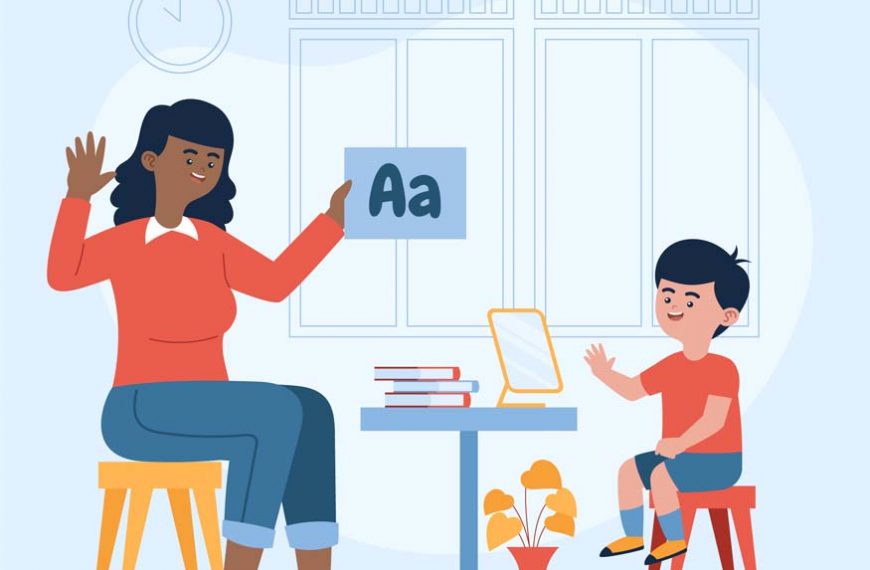Exploring Teaching Aids
The employment of teaching aids in the educational setting has established itself as a potent instrument for enabling successful learning experiences. These tools, also known as instructional materials or resources, are essential in helping students of all ages grasp and be interested in complicated ideas. This article explores the universe of instructional materials, stressing its significance, variety, and goals. This article will provide you with a thorough grasp of teaching aids and their influence, whether you’re a teacher looking for creative teaching aid ideas or an interested learner wanting insight into this educational environment.
What Are Teaching Aids?
Teachers employ a variety of tangible, visual, and aural resources as teaching aids to improve student learning. These tools are purposefully made to fill the gap between students’ conceptual grasp of abstract ideas and their practical comprehension. Teaching aids enable instructors to more effectively convey difficult ideas, accommodate various learning preferences, and provide a vibrant classroom atmosphere.
What are educational tools? Simply said, “teaching aids are educational instruments used by educators to make the period more interesting.” is the answer to this. These assist the instructors as they educate. The use of teaching aids is like the system’s lifeblood. As technology advances throughout time, more useful tools are being developed to aid and support teachers as they carry out their teaching duties. They assist pupils in better understanding the topic content.
Meaning of Teaching Aids:
Teaching aids are just about any tools, technologies, or things that the instructor uses to make the lesson more engaging and productive. A variety of teaching tools, including visual, audio, and audiovisual materials, can be employed in a classroom. These resources make teaching and learning more engaging and fun. Because of these tools, the student isn’t just reading or listening – they interact, visualise, and engage with the material. This helps understanding and plays a huge role in helping students remember the information.
Anything from lectures to functioning models to movies might be used as a teaching aid. These tools assist the teachers in getting students’ attention and helping them remember the lessons they are learning for extended periods of time.
Importance of Teaching Aids:
For a number of reasons, teaching tools are incredibly important in contemporary education. They promote participation in the process first and foremost. Teaching tools captivate and hold students’ attention by providing knowledge in visually attractive ways in a world overflowing with visual stimuli. The development of critical thinking abilities and knowledge retention are both aided by this involvement.
Second, they accommodate various learning preferences. While some kids learn well visually, others learn best when using aural or kinesthetic methods. Teachers may meet all students’ learning preferences by incorporating a variety of teaching tools. Teaching tools also make difficult ideas simpler. When topics are accompanied by images, models, or examples from real life, they become less intimidating. The tools remove obstacles, making learning easier to obtain and more pleasurable.
Types of Teaching Aids:
There are many various types of teaching tools available, each addressing a distinct part of the learning process. Let’s examine a few prevalent categories of teaching tools and their corresponding advantages:
- Visual Aids: Posters, charts, diagrams, maps, graphs, and slide displays are examples of visual aids. These tools are great for providing information that is simple to see. For instance, a graphic may be used to show the water cycle and help pupils understand it clearly.
- Audio Aids: Recordings, podcasts, music, and sound effects are all examples of audio aids. These tools are very useful for learning languages since they enhance listening and speech abilities. Additionally, audio tools can help students understand context and emotion by bringing historical events or literary works to life.
- Audiovisual Aids: Visual and aural components are combined in audiovisual assistance. This category includes multimedia presentations, animations, and videos. These tools are engrossing and offer a multimodal learning environment. For instance, a historical documentary may take students back in time and help them comprehend the material better.
- Tactile Aids: Materials that students may handle, manipulate, and engage with are included in tactile aids. This category includes models, riddles, and interactive simulations. Tactile tools are very successful when teaching science and maths, where students can physically examine complex concepts.
- Realia: Realia describes actual items or artefacts that are utilised in lessons. Realia may offer a genuine experience in cultural or language education. Students’ awareness of cultural variety can be improved by, for instance, wearing traditional attire or cooking implements from several countries.
- Interactive Whiteboards: Technology and conventional teaching tools are combined in interactive whiteboards. They let teachers alter and show digital material, boosting interaction and engagement in the classroom. Teachers are able to create diagrams, take notes, and even seamlessly include multimedia aspects.
Also Read – Traditional teaching methods
Teaching Aid Objectives:
Each teaching tool is created with a specific goal in mind, improving learning in the process as a whole. Let’s examine a few of these goals:
- Clarity and Comprehension: Enhancing clarity and comprehension is one of the main goals of instructional aids. Visual aids, for instance, make complicated subjects easier to understand by dissecting them into manageable parts. With this strategy, kids are better able to retain and recall complex information.
- Active Engagement: By grabbing students’ attention and motivating them to participate in the learning process, teaching aids promote active engagement. Students are more likely to retain material and refine their critical thinking abilities when they are actively involved.
- Conceptual Visualisation: It might be difficult to comprehend some ideas via verbal explanations alone fully. Conceptual visualisation is facilitated by teaching tools like diagrams, models, and movies, which help students understand abstract concepts by connecting them to concrete representations.
- Application of Knowledge: The goal of teaching tools is frequently to close the knowledge gap between theory and application. Students may observe how the ideas they learn in the classroom are applicable to their surroundings through real-life examples and simulations.
- Catering to Learning Styles: Every kid has a different way of learning. Teaching tools make sure that no student is left behind by catering to auditory, visual, and kinesthetic learners. This variety of teaching methods improves inclusion and the learning process as a whole.
- Motivation and Interest: Motivating instructional strategies and learner curiosity are sparked. Students are more likely to be interested, explore deeper, and develop a passion for learning over the long term if they perceive the learning experience to be pleasurable and interesting.
Teaching Aid Examples:
Let’s look at several instances to gain a practical grasp of teaching tools:
- Visual Aid Example: Anatomy Poster
- Audio Aid Example: Language Learning Podcast
- Audiovisual Aid Example: Historical Documentary
- Tactile Aid Example: Geometry Manipulatives
- Realia Example: Cultural Artefacts
- Interactive Whiteboard Example: Interactive Maths Lesson
An anatomy poster may be used in a biology lesson to show the many systems, organs, and operations of the human body. The visual tool improves students’ comprehension of human biology by assisting them in visualising complex components.
A podcast that features dialogues between native speakers can assist language learners in gaining better vocabulary, pronunciation, and listening comprehension. The audio assistance offers a realistic language experience outside of the classroom.
A historical documentary uses narrative, expert interviews, and pictures to bring historical events to life. A multimedia presentation like this takes students back in time and makes history more interesting and accessible.
Geometry manipulatives, such as tangrams or 3D form models, allow students to examine geometric ideas in mathematics teaching physically. Understanding spatial relationships and problem-solving are made easier because of this tactile sense.
Displaying traditional attire, household items, and artefacts from many cultures in a cultural studies lesson might encourage students to engage more deeply with the material. Realia offers a real-world setting for education.
An instructor can use an interactive whiteboard to demonstrate mathematical ideas using dynamic diagrams, drag-and-drop exercises, and animated graphs. The use of technology in this method keeps pupils interested and promotes engagement.
Teaching tools are essential in today’s classrooms because they enhance learning by accommodating different learning styles, increasing engagement, and demystifying difficult topics. The numerous teaching aids, from interactive to graphic, give teachers a wide range of tools to design engaging classes. With specific goals in mind, teaching tools not only make concepts clearer but also promote involvement, conceptual comprehension, and practical application.
















